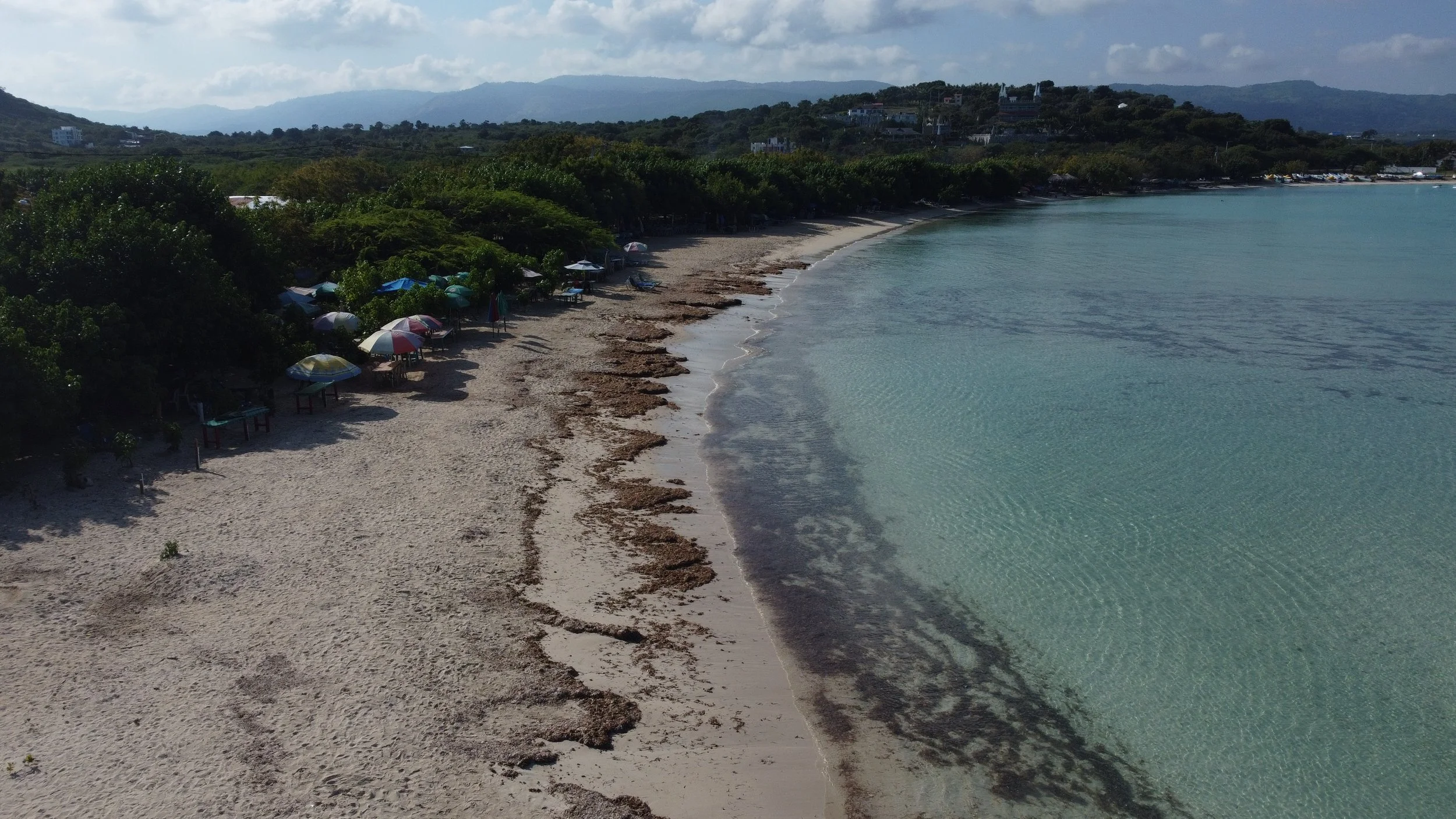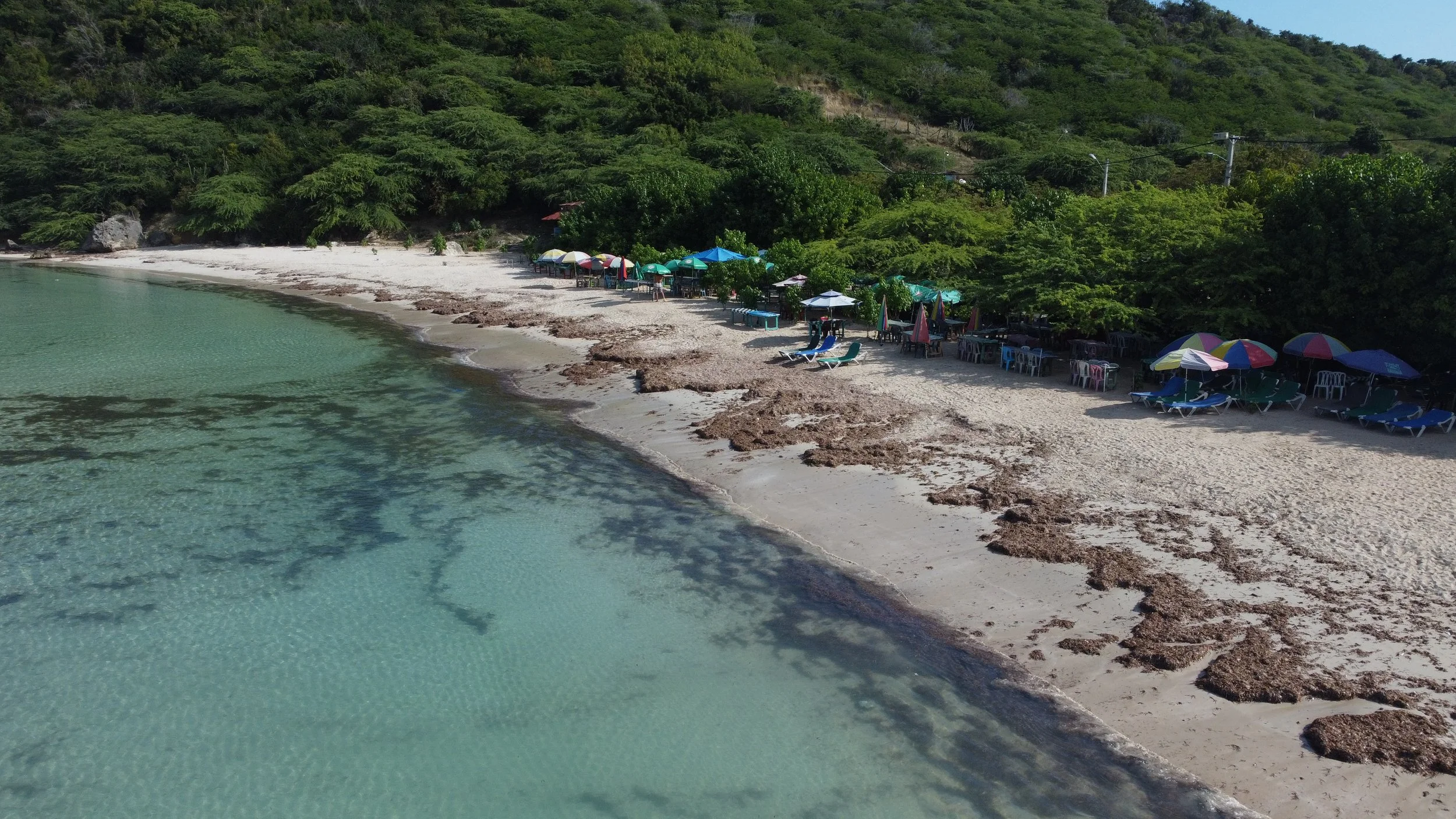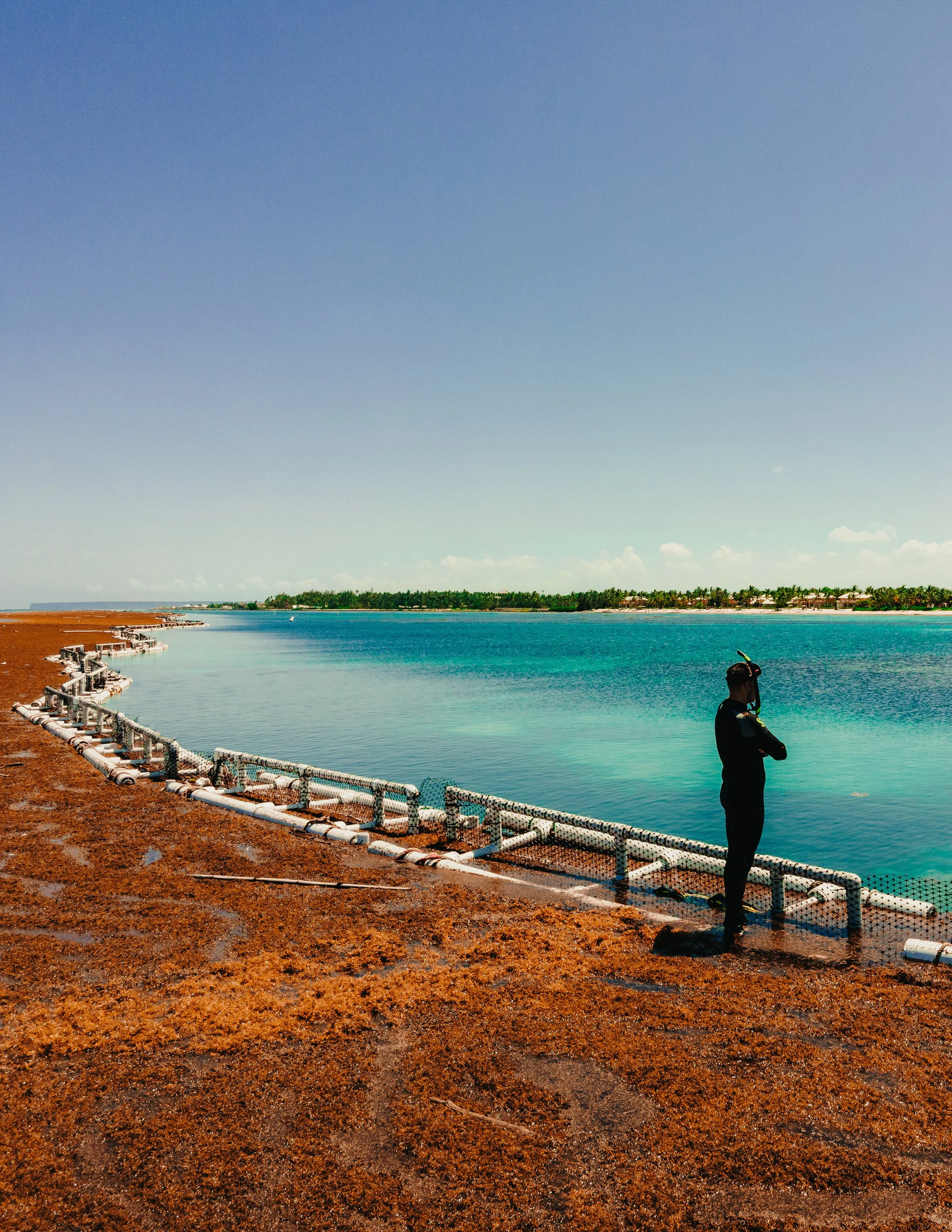Turning problem into opportunity
Sargassum, brown seaweed that emits a foul odor as it rots, has been harming tourism in the Caribbean since 2011. For local stakeholders, residents, and researchers, the challenge lies in turning this threat into economic and ecological opportunities.
All it takes is to close your eyes to picture this postcard-perfect setting: long stretches of white sandy beaches, coconut trees, and a soft melody composed by the crashing of waves — everything in the Caribbean invites dreams. But for the past decade, tourism professionals have feared a threat coming from the open sea.
A researcher in the Department of Environmental Sciences at the University of Puerto Rico, Jodany Fortune co-authored a scientific paper in 2017 on the proliferation of sargassum in the region. “Located in the North Atlantic Ocean, the Sargasso Sea has always existed. But now sargassum is spreading to other areas and affecting all Caribbean coastlines. Several hypotheses may explain this phenomenon: changes in ocean currents due to global warming or the massive influx of nutrients from intensive deforestation around the Amazon River, particularly linked to soybean farming in Brazil”, he explains.
It takes only a few hours for several tons of seaweed to wash up on the white sand. The postcard scene vanishes as the sargassum begins to rot, releasing a smell of rotten eggs and emitting gases harmful to health.
Sargassum fishing
In the Dominican Republic, the Fundación Grupo Puntacana brings together around 70 hotels. For its vice president, Jake Kheel, sargassum represents an existential threat. “In 2015, we installed oil barriers to deal with the first massive arrivals, only to realize they weren’t entirely effective in blocking sargassum. Since then, we’ve tested several models. The most effective is a PVC-based barrier, although it deteriorates more quickly than other materials,” he explains.
In the Caribbean, companies like Algea Nova and The Ocean Cleaner offer the installation of such barriers. Taking a complementary approach, the company SOS Carbon provides collection solutions at the sargassum barriers. Its director, Andrés Bisonó León, aims to turn this environmental crisis into job opportunities for fishermen. “We mainly work with hotels. Our technology can be easily installed on boats and can collect around ten tons of sargassum per hour.”
© ITC Ye! Community
Sargassum can also be collected directly on beaches using manpower and machinery. But it comes at a cost: the National Autonomous University of Mexico estimates the annual cleanup cost at between 799,000 and 1.51 million American dollars Swiss per kilometer of coastline.
Christine J. Mariani, founder of the NGO Sargassum Monitoring, is less convinced. “For years, workers buried the sargassum under the sand, often without proper protection from the gases and the heat. Gradually, some beaches changed color, shifting from white to grey sand. By using heavy machinery to move the seaweed, many tons of sand were also removed, worsening coastal erosion,” she explains. Through her organization, she compiles data on sargassum landings and their impacts.
Biogas or insulation
While hotels seek to get rid of sargassum, researchers argue that the arrivals will continue to increase over time and that it is essential to study them in order to find ways to make use of them. In Puerto Rico, Jodany Fortune is finalizing a thesis on using sargassum biomass to produce biogas: “We have set up an experimental biodigester. It could be a source of employment as well as a response to the need for clean energy.”
In the Dominican Republic, Ulises Jauregui of the Technological Institute of Santo Domingo (INTEC) explains that sargassum biomass can also be used to produce biochar, a type of vegetal charcoal obtained through the pyrolysis of organic matter. “Since 2015, we’ve succeeded in producing activated charcoal. Thanks to a production furnace that enables sargassum pyrolysis, we can completely destroy the heavy metals present in this algae,” he details.
Creator of this production furnace, French engineer Nicolas Brehm adds that “activated charcoal is useful for water and air treatment. The problem with sargassum remains its seasonality and perishability. It doesn’t have the same properties when it’s fresh as when it has started to ferment.”
At INTEC, colleagues of Ulises Jauregui are developing a nanosatellite to better anticipate the arrival of sargassum across the entire Caribbean region. On the Sargassum Monitoring side, Christine J. Mariani places citizen science at the heart of the approach: “By involving Caribbean residents, we receive reports through images taken on the beaches. We have also just set up a network of sentinel-ambassadors to cover the 43 countries affected by sargassum and to improve coordination with researchers.”
Sargassum has other interesting properties. It is possible to extract fucoidan and alginate, two macromolecules used in the pharmaceutical industry. Alginate can also help reinforce a building’s insulation against heat.
The researchers and entrepreneurs interviewed about sargassum recovery remain confident, while acknowledging the road ahead. The challenge lies in collecting sargassum as early as possible, storing it in a dedicated space, and ultimately finding ways to valorize it in order to turn this threat into economic and ecological opportunities.
SÉBASTIEN ROUX
Cover photo credit © Juan Mendoz
This article is available in Echo Magazine n°10 of May 2025.





